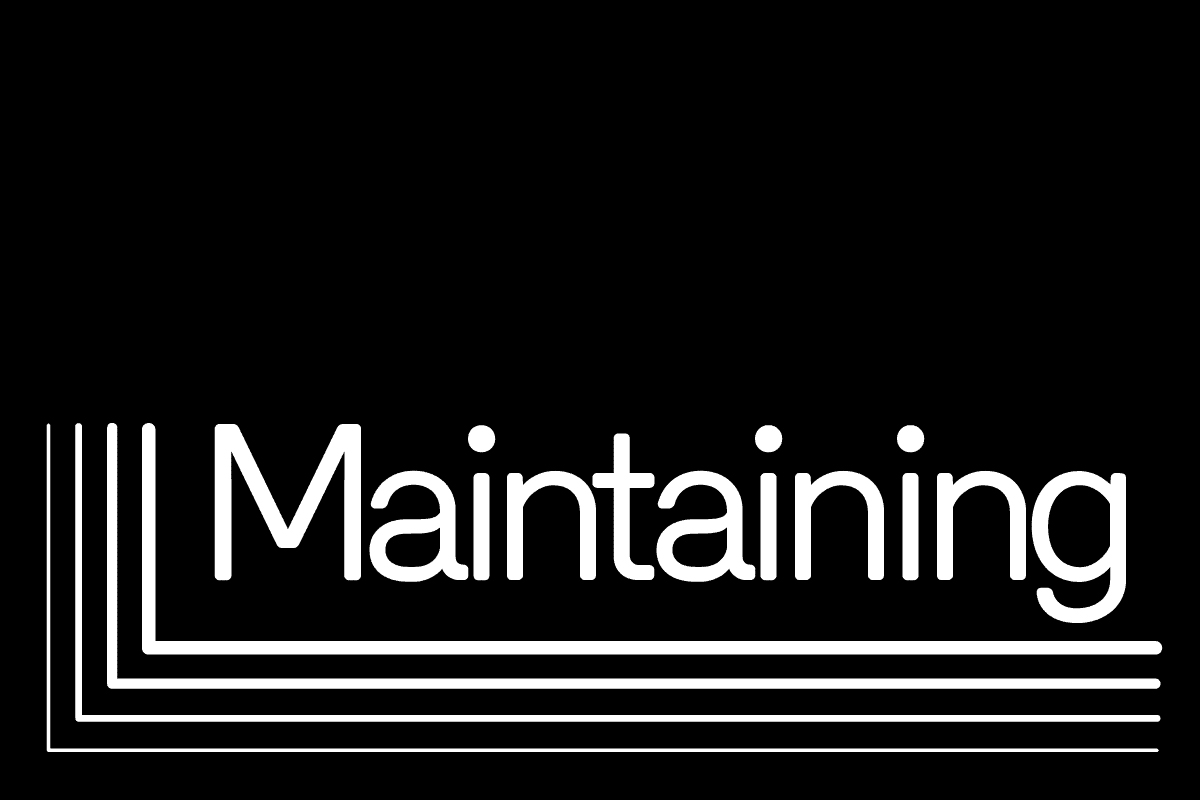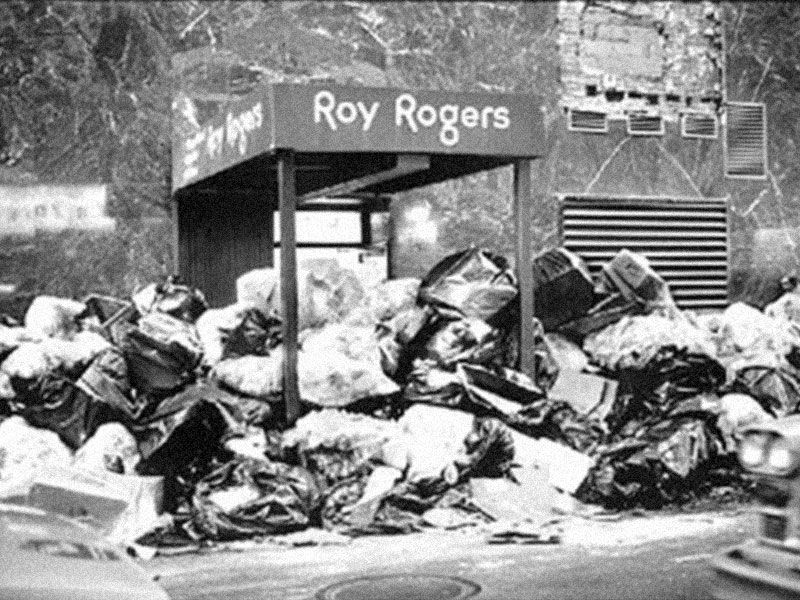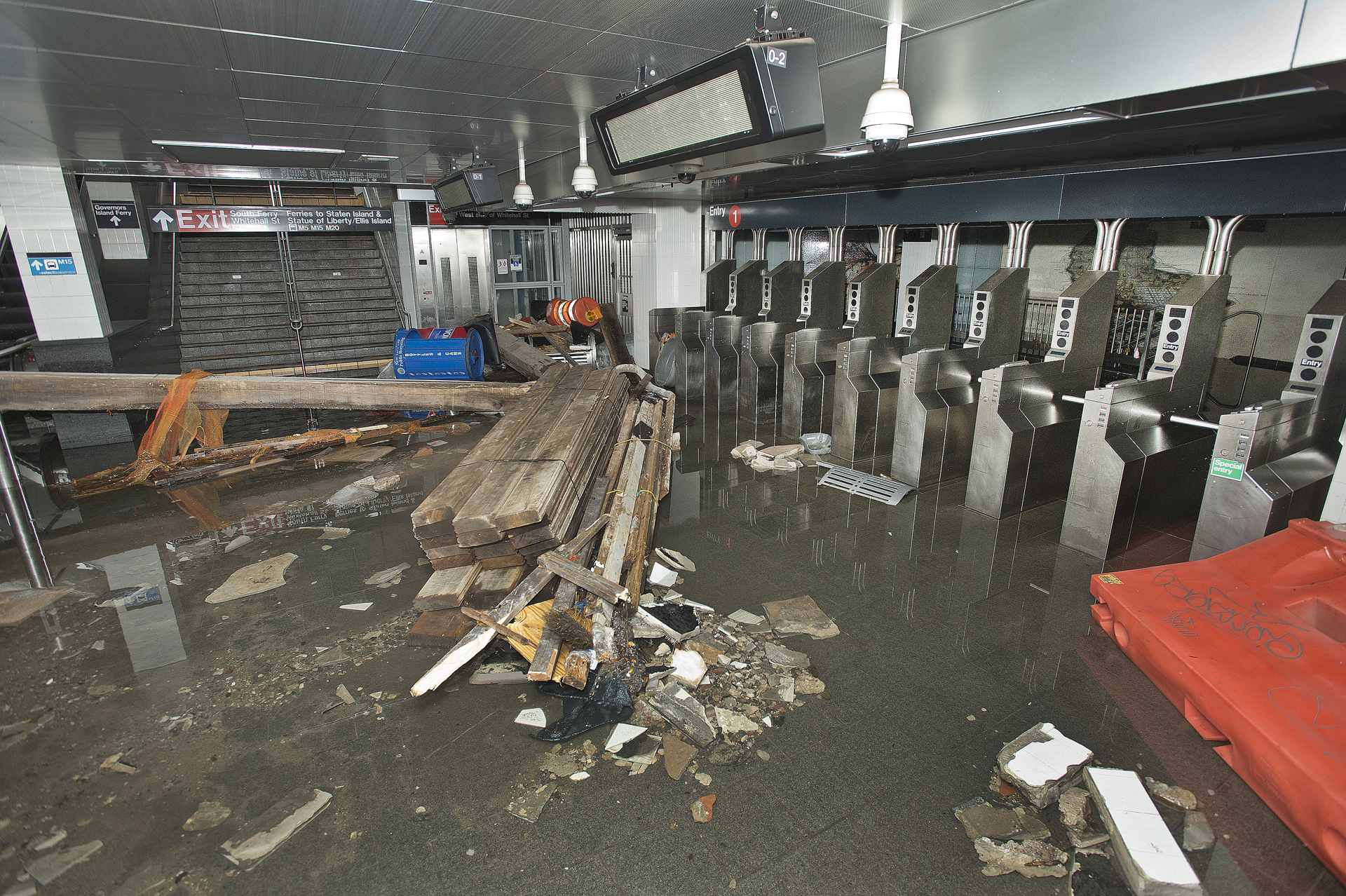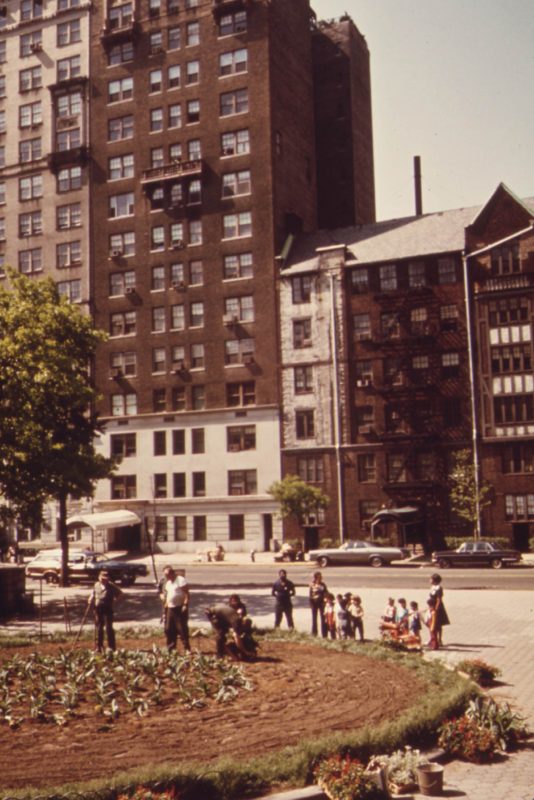
Countless acts of routine maintenance shape New York City every day.
These critical investments of time, labor and capital often go unnoticed until something goes wrong, from the garbage strikes that shuttered businesses in the ‘70s and ‘80s, to the closure of the Manhattan Bridge in the ‘90s, to Hurricane Sandy’s crippling of the subway system in 2012.
Since New York’s financial crisis in the 1970s, philanthropists and private enterprise have often filled the gap. Through a mixture of conservancies, business improvement districts, and zoning incentives, the city has sustained its public spaces, commercial corridors and landmarked buildings. Nevertheless, we are still unable to meet the estimated $50 billion cost of bringing our critical infrastructure to a state of good repair.

NYC Sanitation strike in 1975 left tons of garbage to rot in public spaces. The issue of fair pay for Sanitation workers was not resolved until the 1980s. Photo: Wikimedia Commons
Why does the maintenance crisis persist? Term limits and budget cycles privilege ribbon cuttings and technological innovation over the less glamorous costs of preserving critical infrastructure. While the Second Avenue subway expands at over $2 billion per mile, most New Yorkers endure frequent delays in deteriorating stations. As we build world class parks along a newly developed waterfront, the outdated sewer system floods wastewater into our rivers. As luxury developments sprout throughout all five boroughs, mold and leaks plague public housing.

New York City’s subway system was greatly affected by Hurricane Sandy. Photo: Wikimedia Commons
This year, the Urban Design Forum invites you to consider new ways to sustain our public realm. How can we use design thinking, creative financing, new technology, and community organizing to maintain our physical and social infrastructure?
The Forum invites architects, landscape architects, urban planners, developers, public officials, and technologists to advance designs, policy initiatives and creative financing ideas focused on New York’s existing public infrastructure. Participants are invited to answer the question:
How can we use design thinking, creative financing, new technology, and community organizing to better maintain our physical and social infrastructure?
We welcome design, policy, and creative financing proposals pertaining to the below sites of opportunity:
- Public Housing
- Streetscapes
- Highways
- Subway Stations
- Parks & Public Spaces
- Cultural Districts
- Civic Infrastructure (Community Boards, BIDs, Participatory Budgeting process, etc.)
- Social Infrastructure (Libraries, Schools, Landmarks, Community Gardens)
We are looking for bold ideas with real world applicability. We welcome napkin sketches, policy proposals, detailed designs, essays, videos, etc. Ideas may apply to sites in the City of New York or the greater New York area. Examples from other cities that can be applied to New York City are also acceptable. There is no limit to the number of ideas you may submit, but each must be submitted individually.
Key Questions to Consider ↓
Participants are invited to expand upon questions like:
- When do we repair and maintain, and when do we tear down and build anew?
- How could we engage new stakeholders in the stewardship of public assets and public space?
- How can we use new civic technologies to “innovate” maintenance and management?
- How can we embed “maintainability” in new urban design and city services?
- How can we design public assets that minimize maintenance costs and adapt for future uses?
- Could we expand conservancy, business improvement district, and other public-private models to promote stewardship of other public assets?
- Should the city expand the transfer of air rights to improve transit, public space, and landmarks?
- What are the benefits and costs of expanding public-private partnerships? What are the costs?
- Is our civic infrastructure working? How can we improve the community board system and ULURP process?
- How can we more equitably maintain parks and public spaces beyond high-income neighborhoods?
Programs & Publication ↓

NYC Department of Parks works on a garden in the city, c. 1973. Photo: Wikimedia Commons
The most compelling ideas will form the basis of the Urban Design Forum’s Maintaining program, a series of presentations and roundtables debates with key city leaders hosted monthly from March to September 2017.
Successful proposals will also be included in a December 2017 publication. The publication will be distributed the most persuasive and promising ideas to civic leaders and a broad public throughout the Tri-State region. a wider audience for maximum impact.
Submission Materials ↓
Submission Information
Name of the idea, submitter name (individual, team or company), and key contact (name, email and phone).
Summary
A summary of your proposal (500 word maximum)
Headline Image (if applicable)
One 12”x12” image, chart, or diagram summarizing the idea in high-resolution .jpg format, printable at 300dpi.
Supporting Images (if applicable)
Up to 5 supporting images, charts, and diagrams in high-resolution .jpg format, printable at 300dpi. Suggested minimum size 12”x18”.
Schedule ↓
Wednesday, December 14
Call for Ideas Launch
Monday, January 30
Registration Deadline
Friday, February 3
Successful Registrants Invited to Submit a Full Proposal
Wednesday, March 1
Full Submissions Due
March 2017 – September 2017
Maintaining Public Programs
December 2017
Maintaining Publication Release
Registration ↓
Please submit a 100-word synopsis of your proposal to Caroline Bauer, Program Director, caroline@urbandesignforum.org by January 30, 2017.
Please direct all questions to:
Caroline Bauer
Program Director
caroline@urbandesignforum.org
785-393-4825